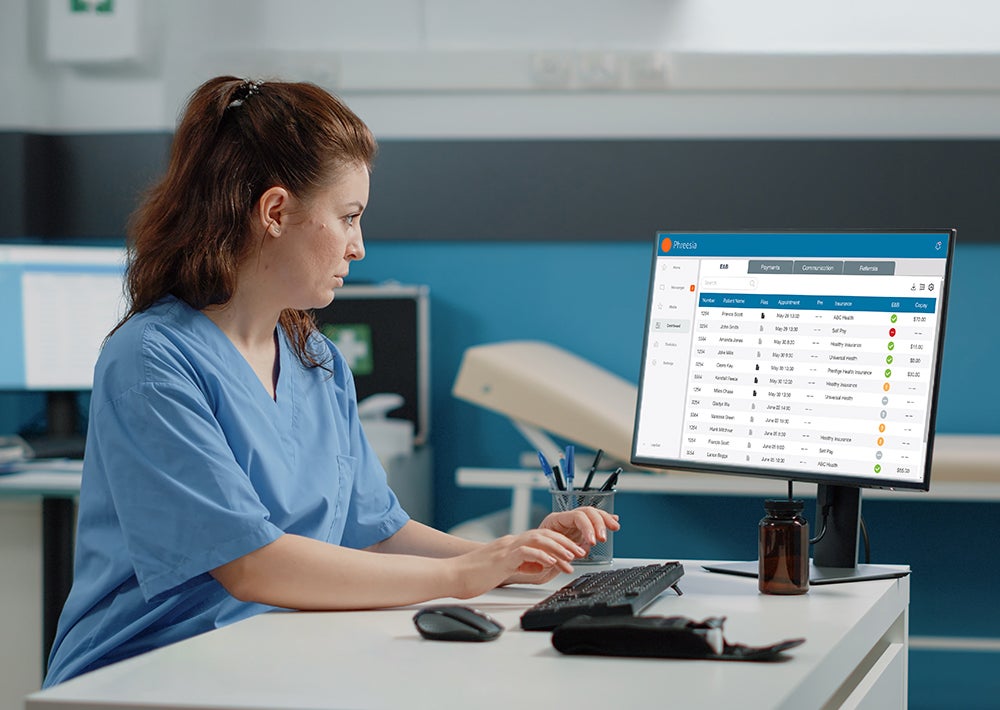Imagine two people with diabetes who go to the doctor for regular check-ups. One is knowledgeable about the condition and the role nutrition plays in staying healthy but often doesn’t have access to healthy foods. The other is just learning about diabetes and how their diet affects their overall health.
If providers do not know the difference in the starting point for these two patients, they would typically try to approach both patients somewhere in the middle — giving too much general information to one, and potentially not enough support to the other. The Patient Activation Measure (PAM) was created to identify and solve this problem — to help providers know exactly where to meet each patient. For example, a provider could quickly connect the first patient with nutrition support, while they could spend time helping the second understand the basics of diabetes management.
1
Level
Overwhelmed, disengaged, not self-aware of behaviors, poor self-management
2
Level
Recognizes they could and should do more, lack confidence in ability to change behavior
3
Level
Good self-management with room for improvement, goal-oriented, understands role
4
Level
Strong problem-solving skills and self-awareness, highly confident, goal-oriented and resilient
The PAM measures a patient’s knowledge, skills and confidence to self-manage their health and healthcare to inform a more tailored approach to treatment.
This kind of efficient, effective, highly personalized care is being bolstered this year thanks to the Centers for Medicare and Medicaid Services’ (CMS) decision to include the PAM Performance Measure in its Merit-Based Incentive Payment (MIPS) program, as well as 18 specialty-specific measure sets and five MIPS Value Pathways (MVPs), which are subsets of measures for specific conditions.
This is a great start, but there is more to be done to help providers adopt this approach. That’s why Phreesia recently submitted recommendations to CMS on proposed additions of the PAM in new specialty measure sets and MVPs for the 2025 Performance Year.
Does it work?
More than 800 peer-reviewed research studies have shown the value of PAM and demonstrated that it can help tailor interventions to patients’ needs, improve outcomes and lower costs. To successfully practice person-centered care and provide value-based health services, providers can partner with patients to be more active in their care and develop healthy behaviors.
But the impact of the PAM isn’t theoretical. The story above of two patients with diabetes is a real one, shared on MedCity’s Pivot Podcast by Beth Wrobel, former CEO of HealthLinc, an Indiana-based Federally Qualified Health Center (FQHC) who uses the PAM to deliver this tailored care to their patients. The success of PAM is borne out in the hundreds of practices in more than 35 states that use PAM each day to help their patients.
And that is why stakeholders throughout the health continuum support the PAM. When CMS first proposed adding the PAM Performance Measure (PAM-PM) to MIPS in the summer of 2023, there was a groundswell of support from healthcare professionals, medical societies, patient advocacy organizations, FQHCs and many more. CMS received letters in support of the measure from groups as diverse as the National Alliance on Mental Illness, the American Academy of Orthopedic Surgeons, the American Diabetes Association and AHIP.
The professionals delivering care on the front lines support this measure for one simple reason: it works.
What’s next?
As the steward of PAM and the PAM-PM, Phreesia knows how measuring activation can give healthcare professionals critical information they need to deliver truly person-centered care. We are thrilled to see the PAM-PM included in MIPS and in specialty sets and MVPs because we know it can improve outcomes and help meet the needs of underserved populations.
To accomplish improved patient care, we believe it is crucial for PAM to be used across healthcare settings and specialties. We see an opportunity for CMS to include this measure as a Patient Reported Outcome Performance Measure in MIPS in additional newly proposed specialty measure sets, such as General Surgery, Infectious Disease and Geriatrics. We also see an opportunity for inclusion as a high priority outcome measure in the six proposed MVP candidates measure sets, which include Gastroenterology Care, Surgical Care, Pulmonology Care and others.
We’re committed to ensuring that providers have the knowledge and tools to successfully report on the PAM-PM, including by partnering with other organizations. For instance, we are currently working closely with one specialty’s medical society to help its members understand the value of PAM and report on it using its registry.
When CMS first proposed the inclusion of PAM in MIPS in the 2024 Physician Fee Schedule, it stated this measure is a “broadly applicable” and “high priority” quality measure. PAM “ensures capture of the patient voice and experience of care related to the patient’s understanding and confidence in the ability to manage their health and be an active partner in their health care journey.”
To fully realize the potential of PAM, it must be included as a quality measure across a wider swath of specialties. We believe this will give providers the tools they need to support patients at every step of their care journey and empower patients and with the tools they need to attain optimal health.





